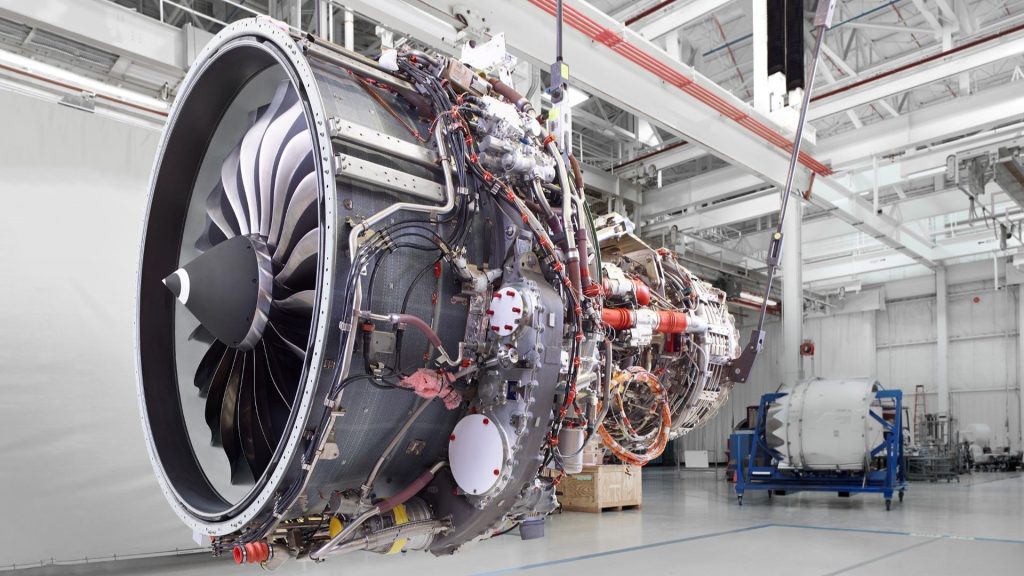Aerospace manufacturer GE Aerospace has announced plans to invest over $1 billion in its global Maintenance, Repair and Overhaul (MRO) and component repair facilities. The Ohio-based engine manufacturer will primarily use the funds to add new engine test cells and equipment to meet growth in the widebody and narrowbody installed base.
The investment effort, which will span five years, seeks to expand the firm’s engine maintenance capacity. It will also fund new “cutting-edge technology,” including new inspection techniques. This will reportedly reduce turnaround times and enhance component repair capabilities in the firm’s overhaul shops.
Notably, the largest portion of the investment has been mooted to support the growing demand for the 3D printing-enabled CFM LEAP engines. Developed by CFM International, GE’s joint venture with French aerospace manufacturer Safran, the engines power the Airbus A320neo, Boeing 737 MAX, and COMAC C919 aircraft.
This follows the announcement that GE Aerospace is investing over $650 million into its global manufacturing plants. This includes the purchase of new industrial 3D printers to scale LEAP engine production.
“Our customers are experiencing strong air travel demand, and we are investing to increase our capacity and efficiency so we can meet their growing needs and keep their planes flying safely and reliably,” commented Russell Stokes, GE Aerospace President and CEO, Commercial Engines and Services.
He added that the new investment reinforces the company’s “longstanding focus on safety, quality, and delivery” for its partners and flying customers.

GE Aerospace invests over $1 billion into MRO facilities
GE Aerospace’s MRO facilities are responsible for maintaining the airworthiness of 40,000 commercial aircraft engines. Services include engine disassembly and reassembly, maintenance, repair, inspection, and testing.
The expansion of these facilities is being driven by the growth and maturity of the company’s LEAP engines amid increasing demand. There are over 3,300 LEAP-powered aircraft in service, with more than 10,000 additional engines in the backlog. According to GE Aerospace, these will increase the global commercial airline fleet by “thousands of planes” in the coming years.
Each CFM LEAP engine features 19 3D printed fuel nozzles that increase fuel efficiency by 15%, compared to CFM56 engines. This efficiency is enabled by the significant weight reduction enabled by additive manufacturing. GE Aerospace’s landmark 3D printed fuel nozzle tips are 25% lighter and five times more durable than their conventionally manufactured counterparts.
3D printing also unlocks the LEAP nozzle’s complex internal geometry. This pre-mixes jet fuel before it is fed into the combustion chamber, boosting engine efficiency. Introduced in 2016, GE Aerospace has 3D printed over 140,000 nozzles to date, a notable milestone for high-volume 3D printing within aerospace.
A significant portion of the new MRO investment has been earmarked for the construction of a new Services Technology Acceleration Center (STAC) near Cincinnati, Ohio. Set to open in September 2024, STAC will reportedly accelerate the deployment of new and innovative service approaches. This will include novel inspection platforms that detect emerging issues and reduce airplane downtime.
Through the investment initiative, $250 million will be injected into GE Aerospace’s worldwide repair and overhaul centers in 2024. This will help to fund the expansion of facilities, new machines, tooling, and safety enhancements.
Around $65 million will be allocated to US-based MRO facilities, including Cincinnati, Ohio; Mcallen, Indiana; Lafayette, Texas; Dallas, Texas; and Winfield, Kansas. In South America, the company’s Brazillian facility in Petropolis will receive approximately $55 million.
MRO locations in Europe and the Middle East will collectively receive ~$60 million. This will be divided between facilities in Budapest, Hungary; Prestwick, Scotland; London, England; Cardiff, Wales; Wroclaw, Poland; Doha, Qatar; and Dubai, United Arab Emirates
The Asia Pacific region will be granted around $45 million for upgrades to MRO centers in Singapore; Taipei, Taiwan; Kuala Lumpur, Malaysia; and Seoul, South Korea
Many of these new investments will support ongoing efforts to improve safety, quality, delivery and cost through FLIGHT DECK, GE Aerospace’s proprietary lean operating model. This systematic approach seeks to deliver “exceptional value as measured through the eyes of customers.”

3D printing boosts the aerospace sector
GE Aerospace is not the only aerospace firm adopting additive manufacturing. South Korean industrial 3D printing solutions provider InssTek recently developed a 3-ton multi-material rocket nozzle and a rocket nozzle extension.
Produced in collaboration with the Korea Aerospace Research Institute (KARI), the nozzle was manufactured using Directed Energy Deposition (DED). The components were fabricated using materials distinctly suited for each part.
The multi-material rocket nozzle features an inner part made of Al-Bronze (Cu alloy) that features a cooling channel at 1 mm intervals. An outer part was 3D printed from Inconel 625 (Ni alloy), while the rocket nozzle extension was made from C-103, an Nb Alloy.
South Dakota-based resin 3D printer manufacturer B9Creations was recently selected by aerospace manufacturer Consolidated Precision Products (CPP) to accelerate ultra-precision jet engine turbine blade production.
Through this agreement, B9creations has become the Global Additive Manufacturing Partner for CPP and its subsidiary Poly6 Technologies. The collaboration has already seen the company provide off-the-shelf 3D printers, semi-custom hardware, and software tools to support production workflow management.
Elsewhere, additive manufacturing service provider Sintavia was awarded a contract by the US Department of Defense (DoD) to develop 3D printed hypersonic propulsion components. Through the agreement, Sintavia will validate the quality and operational processes required to design and 3D print critical components required for hypersonic flight.
Want to help select the winners of the 2024 3D Printing Industry Awards? Join the Expert Committee today.
What does the future of 3D printing hold?
What near-term 3D printing trends have been highlighted by industry experts?
Subscribe to the 3D Printing Industry newsletter to keep up to date with the latest 3D printing news.
You can also follow us on Twitter, like our Facebook page, and subscribe to the 3D Printing Industry Youtube channel to access more exclusive content.
Featured image shows the GE Aerospace and CFM-developed LEAP engine. Image via GE Aerospace.


